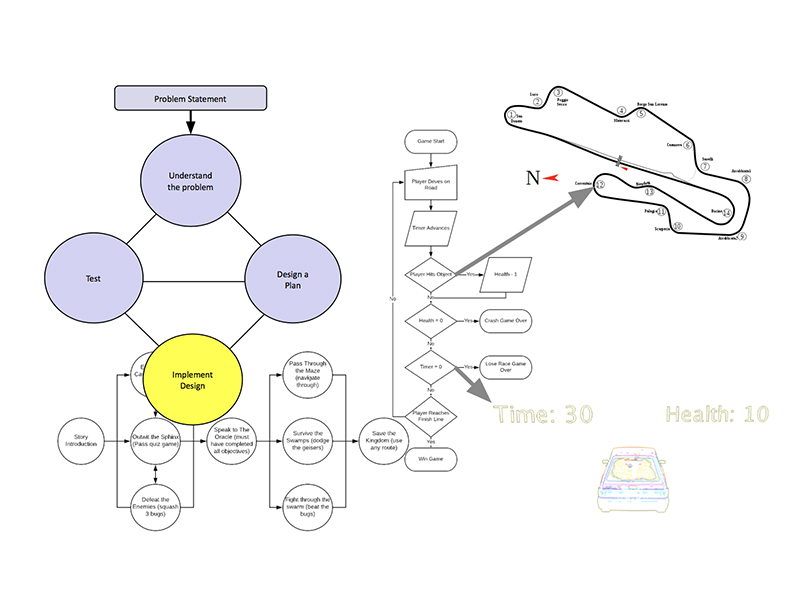This lesson is intended to extend the design process introduction and interactive narrative lessons for the design process for games. It expects that the basic problem solving process has been introduced including script design, storyboarding, algorithm design, branching narratives, open worlds, plot mapping, and world design. This lesson extends those concepts to include the use of game goals, win and lose conditions, game rules and mechanics. This lesson expects an understanding of conditionals, events, and variables in order to support the design concepts. Included are some example worlds showing some programming patterns and game mechanics that can be used for some game types and game progression patterns.
*This lesson is under development with the facilitation guide, tutorials, exercises, and assessments still to come. You can use the general project based approach outlined in the Design Process Introduction tutorial to guide a project based on this presentation.
Learning Objectives Covered in this Lesson
• What is a Game “Problem”
• How to design a game
• What is a game mechanic
• What is a game design document
• How to translate a level design into a world design
• How to translate a game flow chart into an algorithm
The Skills addressed in this lesson are:
Game Design
Mapping out the different components of a game using different tools
Designing a game flow chart
Creating an algorithm / flow chart from game goals and mechanics
Common game mechanic constructions and patterns


